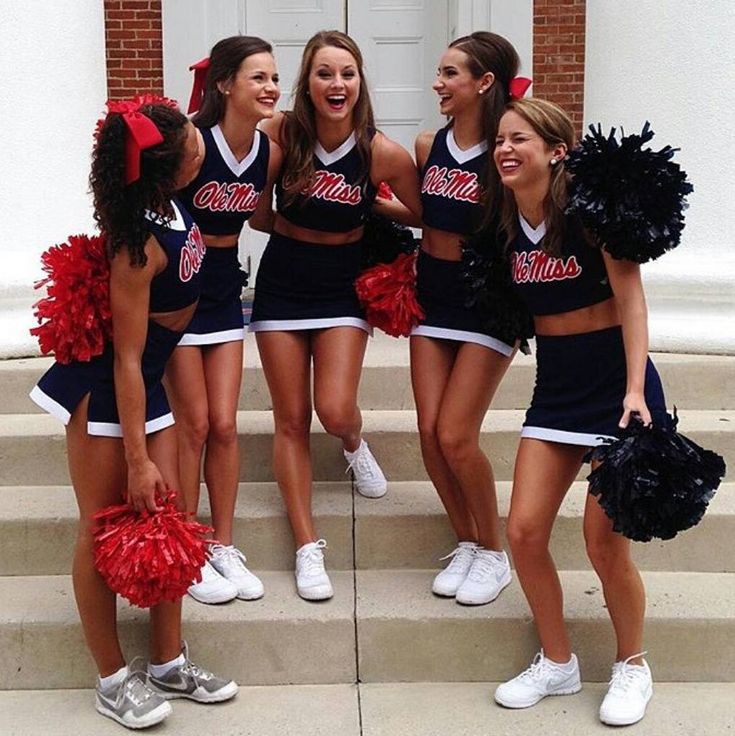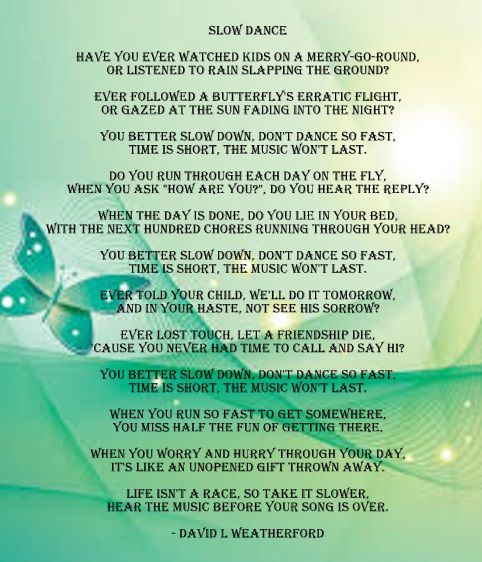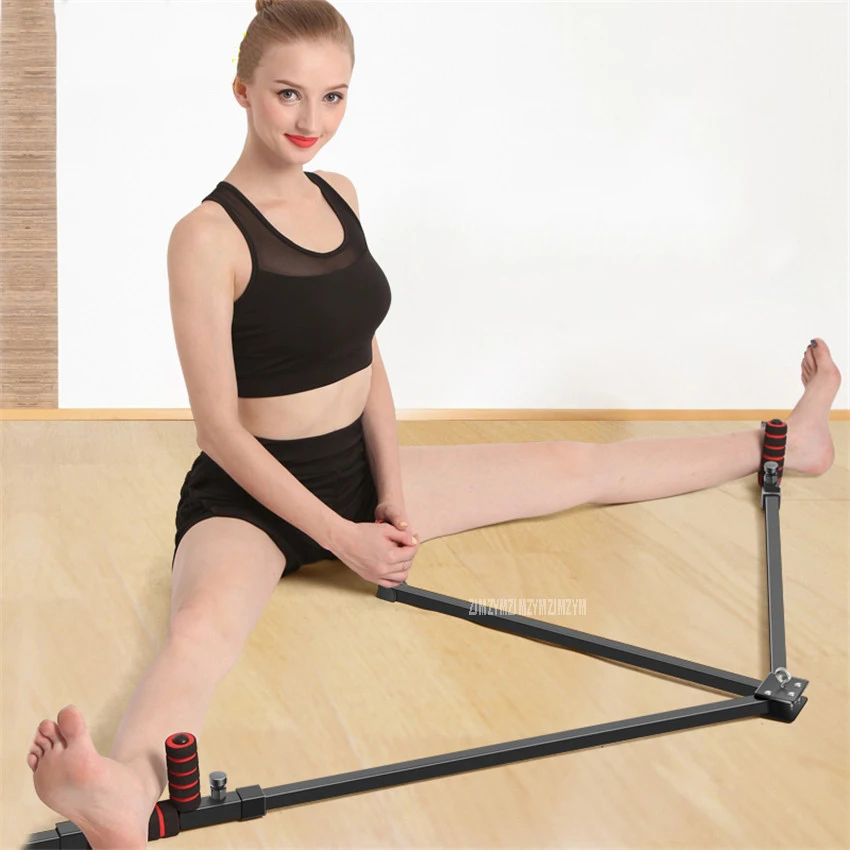How to do the square dance
How To Square Dance? 5 Tips to Make You a Better Square Dancer
Previous | Next
What is Square Dance?
Square dance is a traditional dance that has been part of American social life for centuries. It is documented to have originated in England in the late 16th century. Although originating in England, square dance was also very popular in France and other European countries like Italy and Germany. When Europeans from these countries settled in other countries, they took the dance with them. It was then adopted in those cultures with some minor differences. It was through these settlers that square dance was introduced to North America.
Now square danceis most popular in Germany, the United States of America, Canada, and Australia. Each of these countries has a slight variation in the dance. Square dance has also been designated as the official state dance in 19 U.S. states and is demonstrated in many festivals and family gatherings.
The dance, as mentioned earlier, varies slightly in each of the different countries. The difference is not always significant, but it still exists. In most American forms of square dance, the dancers are prompted or cued through a sequence of steps (square dance choreography) by acaller and dance to the beat (and, in some traditions, the phrasing) of music. In some forms of traditional square dancing, the caller may be one of the dancers or musicians, but in a modern western square dance, the caller is on stage, giving full attention to directing the dancers.
How to Square Dance
Learning to square dance is an excellent way to get some exercise and learn a fun style of movement and socialize at the same time. It may not be the easiest form of dancing, but it is very entertaining to both perform and spectate.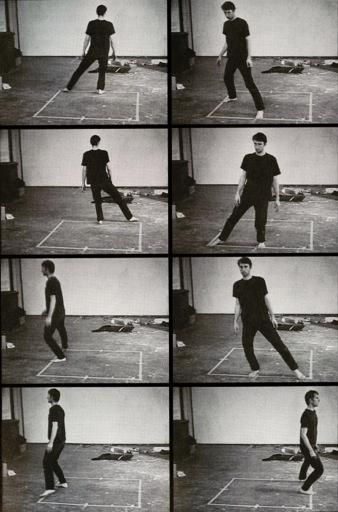
Square Dance Basics
Square dancing typically comprises four couples or eight people. Each couple is made to stand on a different side to form a square. Each dancer faces the center of the square and there is usually a male/female combination for each couple.
The female is usually placed on the left side of her male counterpart and is usually called his “corner”. Similarly, the man on the woman’s right is, in turn, her corner. The couples are then numbered to make sure that every couple follows a proper move. After the numbering, the couples move counterclockwise through the square. The dance only starts with the couple formation, but as the participants move through the dance, the partners are exchanged and original partners can mean nothing. The couple might start out together but during the dance, the man and woman both will get to dance with other people as the dance requires interchanging with the other couples.
|
|
| |
| Dresses | Blouses | Skirts |
Tips for the Beginner Square Dancer
- Listen - Learn to be a good listener.

- Know where you are in a formation - center, end, trailer or leader, always be mindful of the formation so you’ll know what part of the next call to execute.
- Learn the definitions - learn the meaning of the calls.
- Hand grips are preferred over arm grips - in set-ups where dancers are facing- thumbs and fingers together. Thumbs should not be linked like shaking hands.
- Trust the caller - A call set -up may not feel right and you think you are in the wrong position just be patient the caller will guide you (3).
Square Dance “Calling”
In square dance, the caller calls out the instructions to the dancers. When the caller calls out, participants have to dance the steps that are being called. This makes every square dance different and exciting! Calls might also contain a modifier describing how many times the call is to be performed, such as “promenade ½”. (1).
Basic Square Dance Steps
HandHold
This dance step is when a hand from one dancer comes together with the hand of another dancer.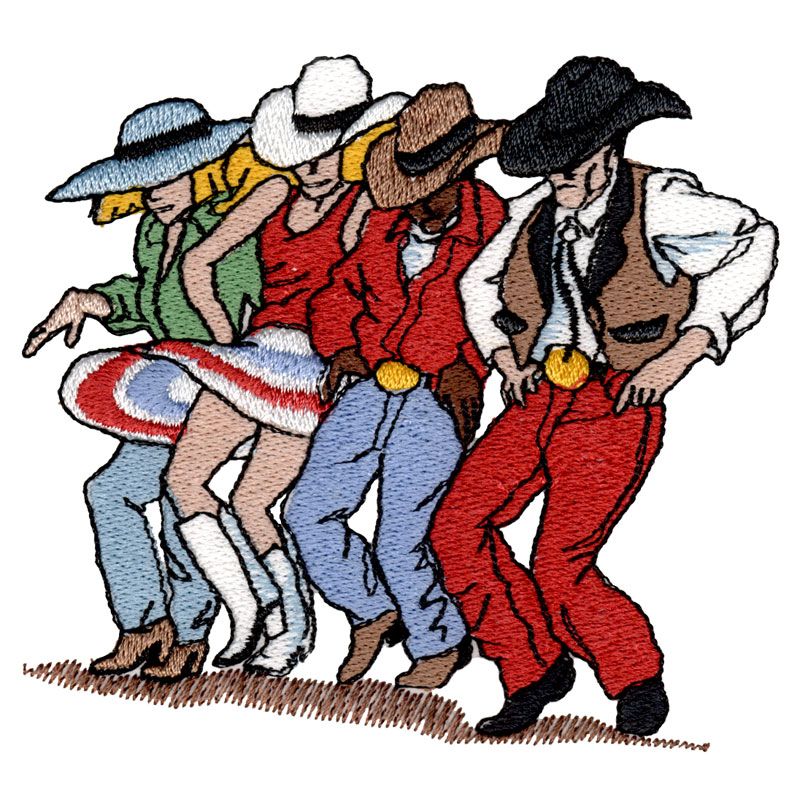 This can happen between the original couple or during the interchange. When this grasp is broken, the handhold is over (2).
This can happen between the original couple or during the interchange. When this grasp is broken, the handhold is over (2).
Allemande Left
This is when corners face each other and hold left hands. While holding the hands, the couples walk around each other and return to their own original position. There is also an Allemande Right, which is the same movement in reverse (2).
Ladies Chain
This is a step that involves only the ladies partaking in the dance. When called out by the caller, all the ladies single out and walk toward each other and hold right hands. They pass through, drop hands, and give left hands to each other’s partners (2).
Balance
As the name suggests, this move is going to definitely test out your balancing game. Partners hold right hands, hop on their left foot, cross over the right, hop on the right foot, and then cross the left. This movement is like an upbeat jazz dance’s Grapevine step. This step is often repeated several times and is a very joyful move because of the tip tap sounds which is produced because of the hopping. Not to mention the fact that it looks lovely to those viewing it if done in proper synchronization (2).
Not to mention the fact that it looks lovely to those viewing it if done in proper synchronization (2).
Opposite
This is when a dancer joins together with that dancer who is facing directly opposite to them (2).
Set
In this move, two lines of dancers facing each other each of 6 to 8 people, customarily with females in one line, males in the other. This is why the dance usually requires six to eight couples to perform it together. There is no way a dance like this can be performed by a single person alone. Its beauty lies in the synchronization of several people dancing together (2).
Promenade
Partners cross hands and walk counterclockwise back to their original positioning (2).
5 Tips to Make You a Better Square Dancer
- Keep both feet on the floor- Remember toe should slide on the floor first. When you walk your one foot is off the floor for a time and you can be off-balance easily. Use the shuffle step with both feet to glide along the floor to remain perfectly balanced.

- Keep you weight forward - Stay on your toes. Make your movements smooth to be a polished dancer.
- Stand tall and move lightly - Let the moving carry you along, don’t trudge.
- Take Smaller steps - Especially in men, make your steps smaller as it is easier to shuffle and maintain a balance that way. Don’t rush; the caller has to be ahead of you, so dance smoothly.
- Listen and dance to the music- The square is the framework for you to move. Take one gliding step on each downbeat of the music.
Conclusion
The square dance represents a celebration and is often seen at special occasions, family gatherings, or carnivals. Keeping the tradition alive and cherishing the heritage is the responsibility of the new, young generation.
The dance is more than a predefined set of steps that is required to be followed rigorously. Square dance brings a sense of community and inclusiveness as it lets anyone and everyone take part and enjoy it. Dancing with random people can enhance your confidence in interacting with people and also enhances community connection.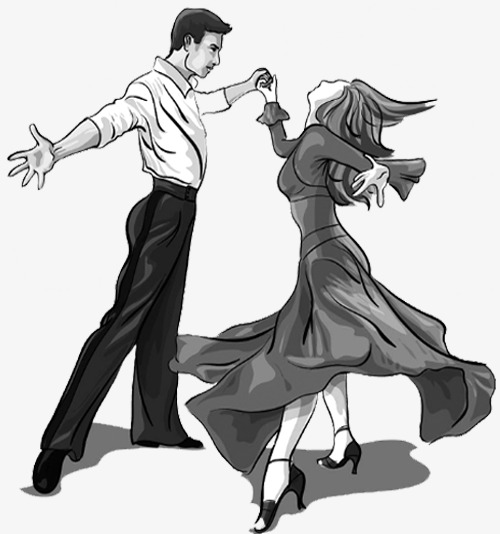 So get out there and get dancing!
So get out there and get dancing!
Sources:
- https://acme-corp.com/teamGuest/R/2_426/sd101/Square%20Dancing%20101.htm
- https://dance.lovetoknow.com/Square_Dance_Steps
- http://www.azsquaredance.com/documents/GCSDA%20HAND%20BOOKLET.pdf
Square Dance - Information for dancers and beginners
Square Dance - Information for dancers and beginnersBe there or be square
Square Dance is a dance for four couples. At the start of each dance these four couples stand on the lines of an imaginary square facing each other forming the so called “square”. Hence the name: Square Dance. But of course this dance is not for eight persons only. Most of the time several squares are dancing at the same time but independently of each other. A caller cues the dancers through a sequence of steps to the beat of the music, all movements smoothly flowing into each other. While dancing the dancers constantly change their positions and their partners until, at the end of a sequence, they are (or should be) back where and with whom they have started.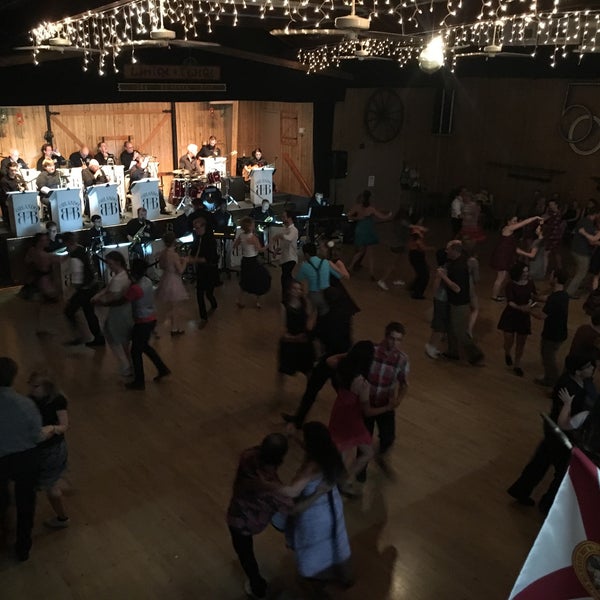 The order in which the specific dance movements, the calls, have to be danced is up to the caller, so the dancers don't know what the next call will be, making every dance a new challenge for each group of eight dancers. This is what makes Square Dance a dance full of fun and variety, that stimulates your concentrativeness and reactions. The fact that you are not only dancing with one partner, but with a new partner for each dance and with three other couples in a square makes it easy to get to know the other dancers. Best conditions for singles and those of you who like to dance but your partner doesn’t.
The order in which the specific dance movements, the calls, have to be danced is up to the caller, so the dancers don't know what the next call will be, making every dance a new challenge for each group of eight dancers. This is what makes Square Dance a dance full of fun and variety, that stimulates your concentrativeness and reactions. The fact that you are not only dancing with one partner, but with a new partner for each dance and with three other couples in a square makes it easy to get to know the other dancers. Best conditions for singles and those of you who like to dance but your partner doesn’t.
Exciting
You never know what the next call will be.
Full of variety
Every dance is different.
Challenging
Dancers have to know how to react to the call according to their positions in the square.
International
The dance movements are the same and called in English everywhere, so you can do Square Dance all over the world.
What is special about Square Dance?
It is astonishing how quickly eight persons, that may not have met before, become a group and enjoy dancing together.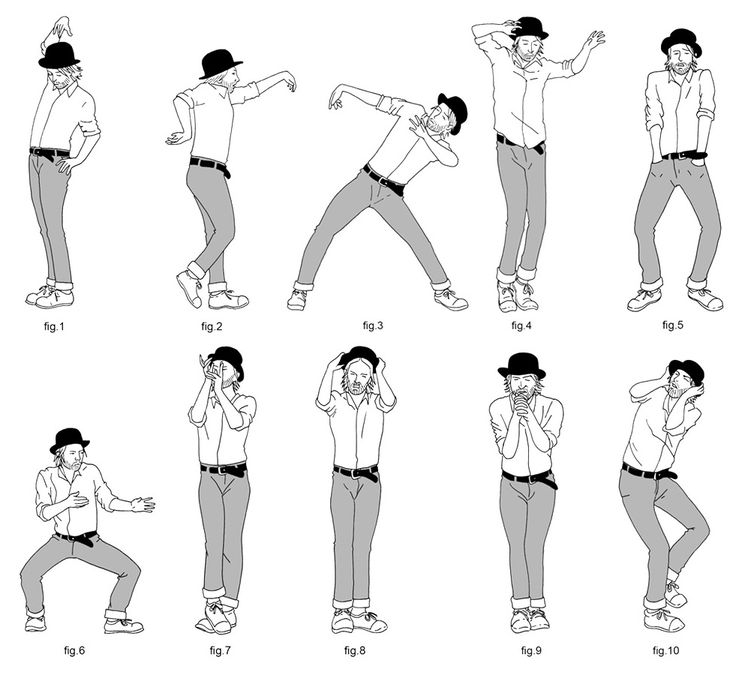 Maybe this is because you do not have to memorize a whole choreography and don’t have to remember what movement is next. The caller does that for you. The dancers just have to dance what they are told. A dance round (also called “a tip”) consists of two parts, that is two dances. In the first dance the caller speaks the calls rhythmically to the sound of instrumental music. This part usually contains more challenging figures to be practiced. The choreography often seems unstructured, what makes it challenging for the dancers. This is followed by the singing call. The caller sings the instructions as part of the lyrics of a song and the dancers have to listen closely to discriminate one from the other. Apropos music. If you think Square Dance is all about Hilly Billy Country Music, think again. You can do Square Dance to a wide range of music: Rock, Pop, Punk, Chansons, and of course Country Music. The calls are all in English and the same everywhere. So it is easy to travel and visit Square Dance Clubs and Special Events all over the world.
Maybe this is because you do not have to memorize a whole choreography and don’t have to remember what movement is next. The caller does that for you. The dancers just have to dance what they are told. A dance round (also called “a tip”) consists of two parts, that is two dances. In the first dance the caller speaks the calls rhythmically to the sound of instrumental music. This part usually contains more challenging figures to be practiced. The choreography often seems unstructured, what makes it challenging for the dancers. This is followed by the singing call. The caller sings the instructions as part of the lyrics of a song and the dancers have to listen closely to discriminate one from the other. Apropos music. If you think Square Dance is all about Hilly Billy Country Music, think again. You can do Square Dance to a wide range of music: Rock, Pop, Punk, Chansons, and of course Country Music. The calls are all in English and the same everywhere. So it is easy to travel and visit Square Dance Clubs and Special Events all over the world.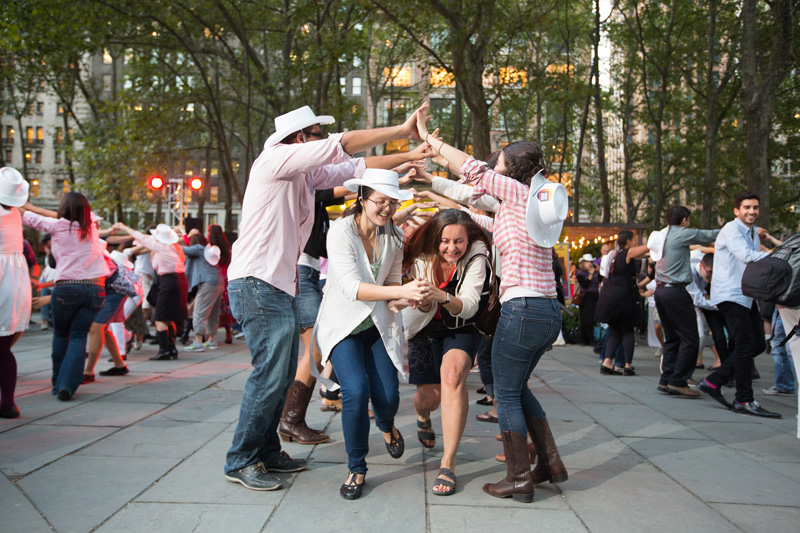
This video is played embedded by YouTube.
The privacy policy of Google applies?hl=en.
Dancer wearing Square Dance attire attending a big event
This video is played embedded by YouTube.
The privacy policy of Google applies.
Dancer wearing workaday clothes
Learning Square Dance
To learn Square Dance you don´t need special knowledge beforehand, but it helps if you are a good walker and can pay attention while walking. The individual moves are taught in a course that will be held by a Square Dance Club. Before a class starts the clubs often offer an “open house” where you can give Square Dance a try and learn the very first moves. Due to the fact that you will have an other partner for every tip, you don´t have to bring a partner to learn Square Dance. The course, where you will be taught about 70 dance figures, will take approximately 30 to 35 lessons. As mentioned before, Square Dance is international and all calls are in English. But don't worry, the explanations will be given in the local language of your country. A basic knowledge of the English language is advantageous, and makes it easier to understand the meaning of the calls, but is not necessarily needed.
A basic knowledge of the English language is advantageous, and makes it easier to understand the meaning of the calls, but is not necessarily needed.
After graduating from the Square Dance Class you might want to join a club to practice your Square Dancing skills on a regular basis. And of course you can also visit other clubs or even take part in Square Dance events.
Find a Square Dance ClubExamples for Square Dance Calls
What is so interesting about Square Dance is the variety of calls, with each call defining the exact way the dancers have to take within the square. Depending on your position in the square this way may differ a lot and the move thus feels different. If all dancers move according to the definitions the concatenation of several calls result in ever new formations. It is the callers task to arrange the calls and create new sequences so that the dance is always challenging and fun for the dancers.
Here you see the starting position of the eight dancers at the beginning of each dance.
All four couples stand on the lines of an imaginary square. There is an exact definition for each call and by following the cues of the caller the dancers move within the square and find themselves in different formations, e.g. columns, lines, circles.
One of the easiest calls is Pass Thru. Starting from a position where the dancers face each other, the dancers just step forward, passing the opposite dancer on the left.
Before:
After:
The call Run is a good example how a dancer has to move in a different way according to his current position and line of sight. Here the directed (active) dancers, e.g. only the ladies, move forward in a semicircle around the person next to them to end in the latter's position. The adjacent (inactive) dancers adjust by stepping to the side into the vacated position from the active dancer without changing facing direction.
Before: After:
Depicted you see that the dancers at the end of the line (red / blue) move in a semicircle. In the above line the red dancer moves clockwise whereas the blue dancer moves anti-clockwise in a semicircle, while the dancers in the middle of the line step aside to the left (green) or right (yellow) respectively. In the next line you see that now not only the position within the line has changed for each dancer, but also for the red and the blue dancer the facing direction changed. Hence you end in a different formation as you started from.
In the above line the red dancer moves clockwise whereas the blue dancer moves anti-clockwise in a semicircle, while the dancers in the middle of the line step aside to the left (green) or right (yellow) respectively. In the next line you see that now not only the position within the line has changed for each dancer, but also for the red and the blue dancer the facing direction changed. Hence you end in a different formation as you started from.
You don't have to know the rules by heart, but you need to know how to execute the move depending on your position in the square or line or whatever formation you are in at that moment. This is why one and the same call can mean something completely different to a dancer in the square. Beginners often struggle with this, but it is actually what makes Square Dance so fascinating.
Square Dance Attire
The traditional Square Dance outfit evolved as Square Dance became very popular in the USA in the 1950's and 60's. Therefore the fashion from this times still dominates the Square Dance attire. Every Square Dance club has its own rules about whether the dancers should dress up or can come in casual clothes. At evening dances and special events, you definitly should dress in the traditional Square Dance attire. But at all times, dress neatly. Never dress down for a dance.
Every Square Dance club has its own rules about whether the dancers should dress up or can come in casual clothes. At evening dances and special events, you definitly should dress in the traditional Square Dance attire. But at all times, dress neatly. Never dress down for a dance.
The traditional dress code for men is long trousers, long sleeve shirts with collar tips and a neckerchief or a bolo tie. While for the ladies a circular skirt, a petticoat and pettipants or a long western skirt with a blouse in matching colors is appropriate.
Circular quadrille
Pair dance for children 8-9 years old.
Dance is included in the Rhythm Program for the 2nd grades of St. Petersburg secondary schools.
Music:
Time signature 2/4.
Basic dance elements:
- Dance step
- Side steps
- Crossed steps
- Heel steps
- Exposing the foot to the side on the heel, or step-heel to the side
- "Do-for-do" (dos-à-dos - back to back)
- Stepping over
- Step-point (step-tap, or step-strike)
BRIEF DESCRIPTION OF THE DANCE
Dance recording - Kondratenko G. M. ("Dances and games for children of 6 years of age". Methodological development. Compiled by Kondratenko G.M. St. Petersburg, NOU "Institute for the Development of Education "Change", 2007.)
M. ("Dances and games for children of 6 years of age". Methodological development. Compiled by Kondratenko G.M. St. Petersburg, NOU "Institute for the Development of Education "Change", 2007.)
Dance editing - according to GMO seminars for ballroom dance and rhythm teachers at SPb GDTYu
Dance composition takes 16 measures of musical accompaniment
Starting position:
The dancers stand in pairs in a circle, facing each other: the boy is facing along the line of dance, the girl is standing with her back along the line of dance.
Feet in 1 (natural) position.
Hands raised to 2nd position, hands joined - "by fingers".
1 figure - Side steps to the center and from the center - 8 measures.
1-2 cycles. Count 1-2-3-4
The dancers perform side steps towards the center in pairs.
The boy starts with his left foot. The girl starts on the right foot.
1- Step from the toe to the side, towards the center (boy - left foot to the left, girl - right foot to the right).
2-Step back/cross - place the free leg back, about 3 pos. (boy - right leg, girl - left) and squat slightly on two legs.
3- One more step from the toe to the side, to the center (boy - left foot to the left, girl - right foot to the right).
4- Move the free leg to the side on the heel (the boy puts the right foot on the heel, the girl - the left). Don't lean on the outstretched leg. The supporting leg is slightly softened. The head turns towards the exposed leg (for the boy - to the right, for the girl - to the left). The movement is accompanied by a slight natural inclination of the body in the same direction.
3-4 cycles. Count 5-6-7-8
Dancers in a pair repeat the movements of 1-2 measures, moving now from the center. The boy starts on the left foot, the girl on the right foot. Before the first step to the side, you need to remove the foot from the heel, pull the toe and take a step to the side from the toe.
5-8 strokes. Count 1-2-3-4, 5-6-7-8
Count 1-2-3-4, 5-6-7-8
Repeat movements 1-4 measures.
2 figure - "C-for-do" - 4 measures.
9-12 bars. Account 1-2-3-4-5-6-7-8
Partners separate their arms and lower them down along the body, the hands are raised.
Count 1-2-3-4-5-6-7- In 7 steps, the partners go around each other's backs, moving clockwise, and return to their places. The boy starts on the left foot, the girl on the right foot. Moving forward, partners meet with their right shoulders, moving backward - with their left. On the steps "to-for-do" the boy's hands move forward / backward along the body. The girl with each step makes a slight movement of her shoulders up / down.
On a count of 8, place your free leg next to your skating leg. The boy puts his right leg without weight to his left leg. The girl puts her left foot to her right and transfers her weight to her left foot. (Both partners have their right leg free.)
3 figure - "Window" - 2 cycles.

13-14 bars.
Both dancers start with the right foot.
OPTION-1. Count 1-I-2, 3-I-4
1- Partners take a small step forward with their right foot (towards each other). The knee of the right leg softens. At the same time, they give each other their right hands and raise them in 3 poses. - "window". The left arms are lowered down, the hands are raised.
I-2- Partners step over in place (left foot, right foot), slightly tilting their heads to the left and looking at each other through the "window" from under the joined hands. Stepping is performed from the pad to the entire foot and is accompanied by springy movements in the knees up / down.
3- Both partners take a small step back with their left foot (away from each other). The knee of the left leg softens. The connected right hands go down to level 1 pos.
I-4- Dancers perform a springy stepover in place (right foot, left foot).
OPTION-2. Count 1-2-3-4
Instead of stepping over, you can perform a tap with the free leg (soft ball kick) next to the supporting leg:
1-2- Small step with the right foot forward and warm with the left foot next to the right foot.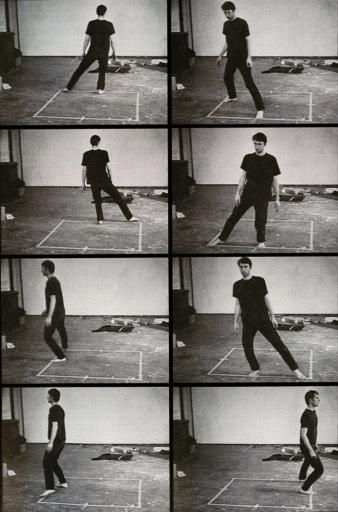
3-4- Take a small step back with the left foot and tap with the right foot next to the left foot.
On a step forward, partners may not join hands in 3 poses, but move their right hands to each other from top to bottom, connecting the hands with a handshake ("hello"). On a step back, the hands are separated.
4 figure - Transition to a new partner - 2 measures.
15-16 cycles. Score 5-6-7-8
Both the boy and the girl start with the right foot.
Count 5-6- Two steps forward with the right foot, passing each other and meeting with the right shoulders: the boy moves forward along the line of dance in the inner circle, the girl moves forward against the line of dance in the outer circle. The dancers move on to new partners. On the steps, the boy's hands move forward / backward along the body. The girl with each step makes a slight movement of her shoulders up / down.
Count 7-8- Take a step with the right foot to the side (in front of the new partner) and bring the left foot to the right in 1 pos. The boy puts his left foot to his right foot without weight. The girl, putting her left foot to her right, transfers the weight of the body to her. (The boy's left leg is free, the girl's right.) At the same time, the dancers join their hands in the starting position with a new partner.
The boy puts his left foot to his right foot without weight. The girl, putting her left foot to her right, transfers the weight of the body to her. (The boy's left leg is free, the girl's right.) At the same time, the dancers join their hands in the starting position with a new partner.
The dance composition is repeated with a new partner.
Literature
- " Dances and games for children 6 years of age ". Methodological development. Compiled by Kondratenko G.M. St. Petersburg, NOU "Institute for the Development of Education" Change ", 2007
- Educational and methodological recommendations for organizing work with the whole class in elementary school on rhythm, rhythmoplasty and ballroom dancing . Shutikov Yu.N. St. Petersburg, 2006
- " Folk dances ". Series "Everybody dance". Author-compiler O.V. Ivannikov. Moscow - ed. AST, Donetsk - ed. STALKER, 2007
- " Rhythm at school, the third lesson of physical culture ".
 Teaching aid. Zh.E. Firileva, A.I. Ryabchikov, O.V. Zagryadskaya. Publishing house Phoenix, Rostov-on-Don, 2014
Teaching aid. Zh.E. Firileva, A.I. Ryabchikov, O.V. Zagryadskaya. Publishing house Phoenix, Rostov-on-Don, 2014
Poems for children about the dance "Circular quadrille "
For Russian quadrille, old
Only four pairs are needed.
And in the ROUND QUADRILL
Everyone will dance with you!
Video for the dance "Circular Quadrille"
Figures of the dance demonstrate KONDRATENKO G.M. - Head of the GMO of ballroom dance teachers at St. Petersburg State Children's and Youth Theater and ZOLOTOVKHAYA T.V. - Lecturer in the choreography department of the Leningrad Regional College of Culture and Art. The recordings were made at seminars for ballroom dance teachers.
The full composition of the dance is presented on video recordings made at the GMO seminar for ballroom dance teachers at St. A.I. Herzen in ballroom dancing among students and youth and at the City competition of dance groups under the program "Rhythmika".
Types of quadrille and their features - Encyclopedia of modern knowledge
Dance creativity of the Russian people
Each nation has its own traditional dances, the features of which are associated with the ethnic character, the system of spiritual and moral values and images - ideals. Folk dances reflect the labor and everyday traditions of the people, the characteristics of the natural environment and its habitation. Folk dance reveals centuries-old traditions to future generations. In ancient times, folk dances existed in close connection with magical rites, rituals, holidays of the folk calendar. Often dances performed incantatory functions. In the language of dance, a person wanted to ask the higher powers for rain in order to get a good harvest or a successful hunt, etc.
Folk dances reflect the labor and everyday traditions of the people, the characteristics of the natural environment and its habitation. Folk dance reveals centuries-old traditions to future generations. In ancient times, folk dances existed in close connection with magical rites, rituals, holidays of the folk calendar. Often dances performed incantatory functions. In the language of dance, a person wanted to ask the higher powers for rain in order to get a good harvest or a successful hunt, etc.
The people of the North still have dances of the bear, walrus, deer, which had a ritual meaning and, according to ancient beliefs, contributed to successful hunting, fishing, etc.
Over time, folk dances have lost their magical ceremonial and ritual functions, and began to turn into one of the forms of leisure, recreation and entertainment.
Russian folk dances have a number of characteristic features. The manner of their performance is distinguished by breadth, simplicity and accessibility.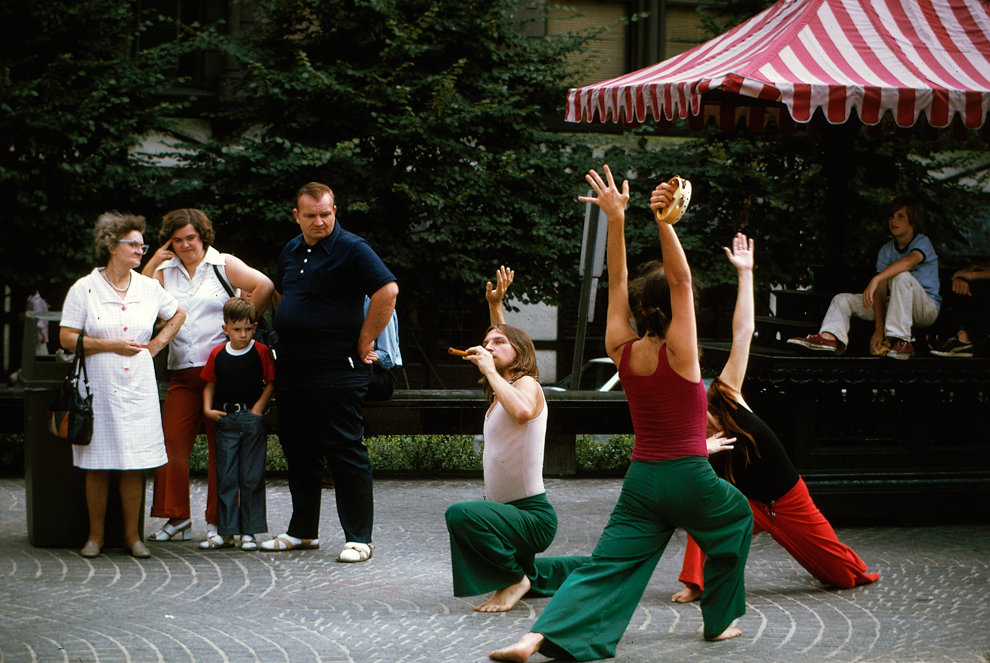
In different territories Russian folk dance is performed differently: in the North - majestically, sedately, proudly; in the central part - sometimes lyrically, sincerely, sometimes cheerfully and playfully; in the south - the manner of performing the dance is perky, daring and mischievous.
The main types of Russian folk dance are round dance and dance.
Round dances are ornamental and playful, linear and circular, etc. Ornamental and play round dances are the most typical for round dance and especially popular.
Ornamental - round dances depicting an ornament, pattern, figures, lace.
The skill of the leading performer is important in them. Songs, under which an ornamental round dance is performed, are called round dance songs.
Game - these are round dances in which actions are played out according to the plot of a round dance song.
Expressive means are used in these round dances:
Shawl - pillow, bed;
Stick - horse, sword, crutches;
Whip - a symbol of obedience; etc.
In the game circle dance, not so much the ability of the ringleader to invent a drawing is valued, but his acting skills and vocal abilities.
Dance is one of the oldest types of Russian folk dance.
The dance happens:
- Single - a dance performed by one dancer,
- A pair dance is a dance performed by two guys, two girls, a guy and a girl, etc.
- Dance - dances are performed in front of each other, or wall to wall, or a girl against a guy.
The purpose of the dance is a competition in dexterity, strength, intelligence, endurance. The winner is the one who danced his opponent, performed the most knees, demonstrated the most difficult tricks (crackers, fractions, spins, jumps).
With the change in the way of life of the people, a woman becomes a more active participant in traditional festivities. Elements of solo dance appear in women's dance, women - performers of the dance bring a new stream to the performance of the dance - a ditty.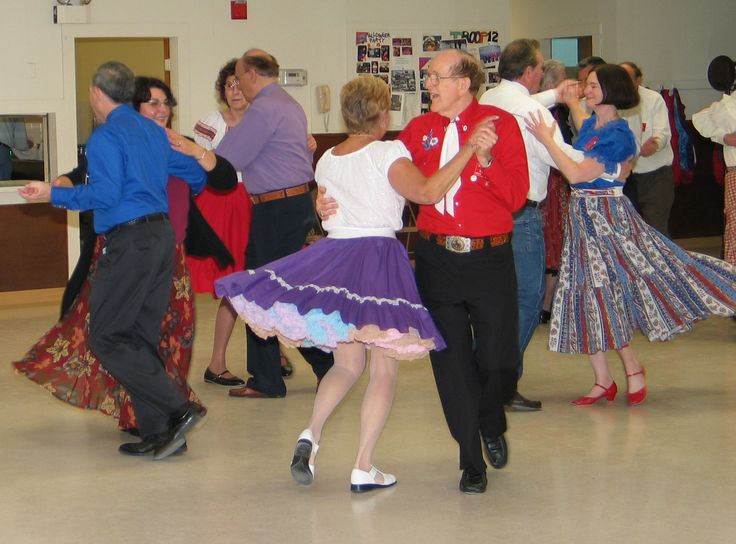 First, a penetration is performed, then a ditty, and after a knee.
First, a penetration is performed, then a ditty, and after a knee.
Dances are performed under the Barynya, Kamarinskaya, Polyanka. There are dances: topotush (Arkhangelsk region), Ryazanochka, Yeletsky (Ryazan region), motanechka (Saratov region), loose (Bryansk region), etc.
Recently (since the 19th century) the Russian quadrille has become known.
Quadrille - a pair dance, once a salon dance, which eventually spread among the people, modified in movements and manner of performance, but retaining the compositional features of historical dance
As a folk dance, the quadrille has many varieties: Russian and Ukrainian, Belarusian and Lithuanian, and even American (square dance, which means "square dance"). Each of the options is different originality and diversity.
Origin
The name "quadrille" has common roots in French (quadrille), Spanish (cuadrilla), Latin (quadrum). This may raise doubts about which country is the birthplace of the dance. However, historical sources confidently assert that the square dance originated in France as a ballroom dance, formed from the English country dance. The country dance was danced in the 17th century by English peasants, and the square dance spread to the salons of France and other European countries in the 18th and 19th centuries.
However, historical sources confidently assert that the square dance originated in France as a ballroom dance, formed from the English country dance. The country dance was danced in the 17th century by English peasants, and the square dance spread to the salons of France and other European countries in the 18th and 19th centuries.
Pairs of dancers were arranged in a quadrangle opposite each other and alternately performed their parts. The quadrille consisted of five figures, each of which ended with a general movement that united all the dancers.
At first, the figures were quite complex and were called Le Pantallon (Pants - after the name of the famous song), L'ete (Summer), La Poule (Chicken - also in connection with the song), La Pastourelle (Pastoral) and Finale (Finale) with the inclusion in it by the dance master Trenits of a figure named after him La Trenis. Despite the difficulty of mastering the figures, the movements had to be ideally worked out and brought to perfection by salon dancers. Over time, the quadrille changed a lot, the names of the figures were replaced by numbers, some movements disappeared, others were simplified.
Over time, the quadrille changed a lot, the names of the figures were replaced by numbers, some movements disappeared, others were simplified.
Having conquered the visitors of salons and dance halls, the square dance began to spread among the people. This process was especially characteristic for Russia - the square dance was danced even at the assemblies of Peter I at the beginning of the 18th century. Gradually, she went into the folk environment, where she changed a lot, acquired a national character and became one of the favorite folk dances. Old figures were reworked, new ones were composed, which took into account the peculiarities and dance style in each individual locality. These changes, made to the folk dance, provided the square dance with a long life.
What is a square dance?
Quadrille time signature - 2/4, sometimes 6/8. Performed by an even number of pairs. There can be from 5 to 12 figures in a quadrille and a characteristic composition. However, when describing this dance, one should clearly understand what kind of quadrille is in question.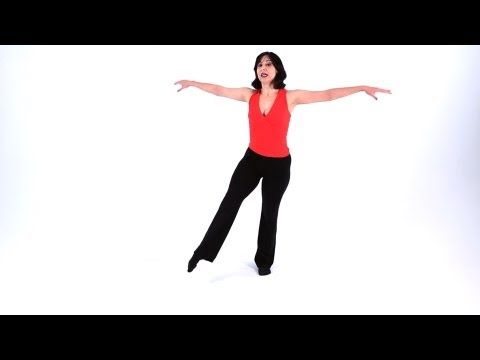
Types of square dance and their features
There are many types of square dance as a folk dance: Russian, Belarusian, Ukrainian, Lithuanian, Estonian, Latvian, etc. Within the species, there may be many more local options, for example, a Russian square dance can be called Moscow, Volga, Ural, or, as in the northern regions of Russia, four, six, eight.
Russian square dance
Russian square dance has diverse forms and principles of construction, as well as figures that are quite complex in composition and technique.
Three groups of square dances can be distinguished according to the form of formation:
1. Square or corner, where the couples stand on the sides of the square (there are usually four of them) and the movement is carried out crosswise or diagonally.
2. Linear or two-row, which can include up to 16 pairs and even more. The composition of a linear quadrille is characterized by the movement of two lines of dancers towards each other.
3. Circular - 4, 6 or 8 couples dance in them. The movement is carried out in a circle, sometimes to the center of the circle and back into a large circle.
Figures in the Russian quadrille can have names associated with the nature of the movement performed or the pattern of the dance: a passage, an acquaintance, a twist, an asterisk, a collar, etc. There are pauses between the figures. The figures are announced as leading or a sign is given for their execution - with a handkerchief or a stomp.
Ukrainian square dance
Ukrainian square dance consists of many figures, up to twelve, differs mostly in musical compositions to which it is performed. Most often these are song melodies (“Balamute”, “Oh, don’t go, Gritsu”, etc.).
Belarusian square dance
The Belarusian square dance is characterized by simplicity of movements and a variety of constructions, figures can be from 4 to 12. Unlike other types, the Belarusian square dance can include solo dancers separately or in pairs.



